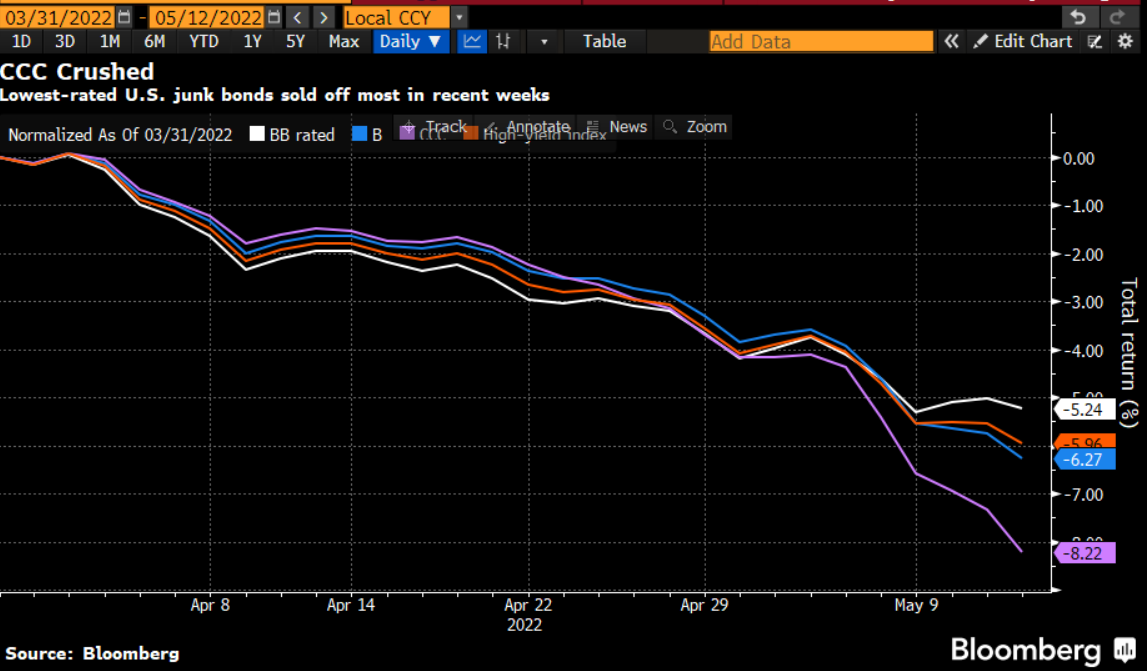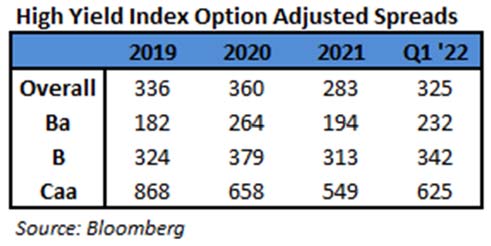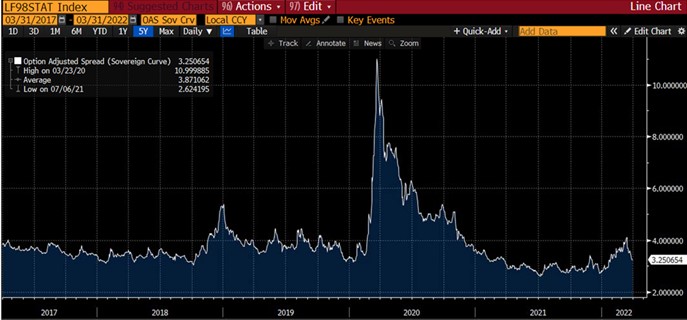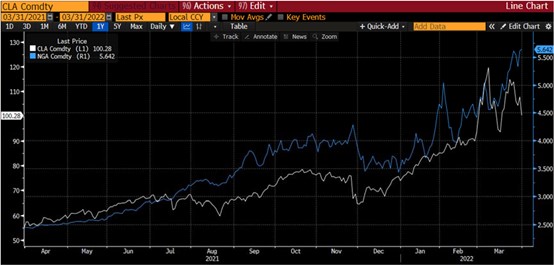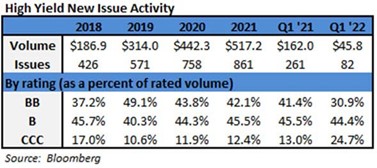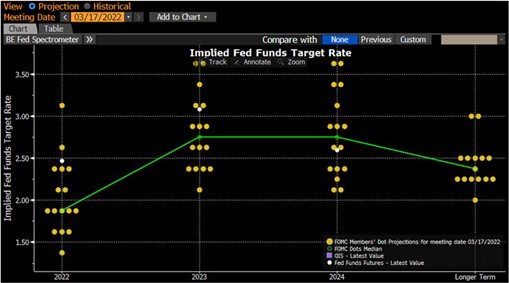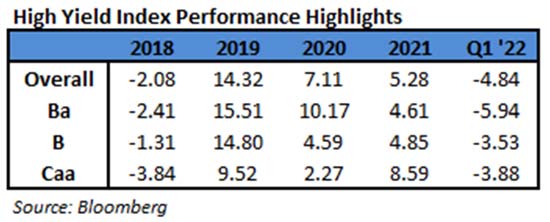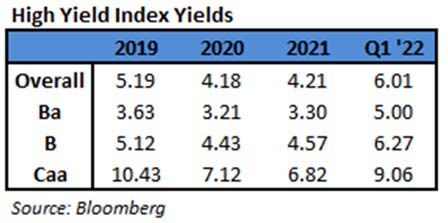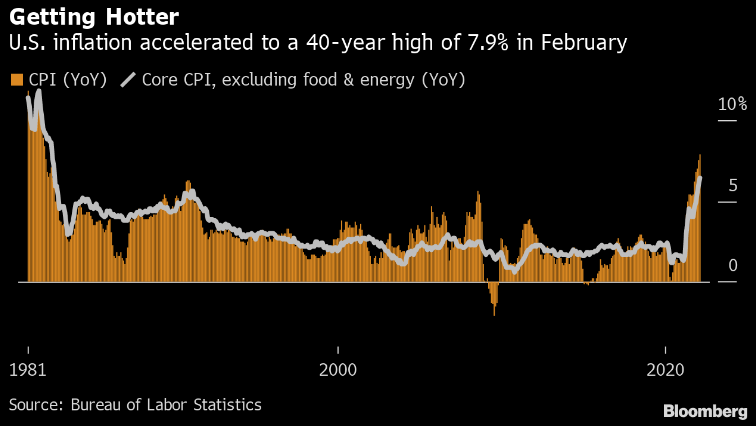Fund Flows & Issuance: According to a Wells Fargo report, flows week to date were $0.4 billion and year to date flows stand at -$36.1 billion. New issuance for the week was $1.3 billion and year to date issuance is at $65.2 billion.
(Bloomberg) High Yield Market Highlights
- U.S. junk bonds are headed toward the biggest weekly loss in two months after declining for five straight sessions, the longest losing streak in almost two months, as the Fed-fueled rally faded amid concerns that hawkish monetary action may precipitate an economic recession.
- Inflows into junk-bond funds have moderated, signaling investors are turning more cautious with the rally waning steadily amid fears of an imminent recession.
- Weekly losses spanned across all high yield ratings. BBs are also on track to post the biggest weekly loss in two months. The loss follows a decline in eight consecutive sessions, the longest losing streak since February.
- BBs are the worst performers week-to-date with losses of 1.46%.
- CCC yields rose to 11.62%. The index is poised to the best performing asset in the high yield market, with modest losses of 0.83% week-to-date.
(Bloomberg) Yellen Warns Inflation to Stay High, Recants Again on Transitory
- Treasury Secretary Janet Yellen told US lawmakers peppering her Tuesday with questions about the surge in the cost of living that inflation is likely to stay high and that she ought not to have termed big price increases as “transitory” last year.
- Yellen, in a Senate Finance Committee hearing, continued to defend President Joe Biden’s $1.9 trillion American Rescue Plan, which Republicans have blamed for helping drive inflation to a four-decade high.
- “Senator, we’re seeing high inflation in almost all developed countries around the world, and they have very different fiscal policies,” Yellen said in response to Montana Republican Steve Daines. “It can’t be the case that the bulk of the inflation we’re experiencing reflects the impact of the ARP.”
- She acknowledged once again that both she and Federal Reserve Chair Jerome Powell erred in 2021 by forecasting that high inflation wouldn’t persist.
- “Both of us probably could have used a better term than ‘transitory,’” she said.
- “There’s no question that we have huge inflation pressures, that inflation is really our top economic problem at this point and that it’s critical we address it,” she added. “I do expect inflation to remain high although I very much hope that it will be coming down.”
- Lawmakers from both sides of the aisle highlighted their own concerns with inflation, ahead of midterm congressional elections in November where Democrats will be challenged to retain their control.
- Yellen, along with Democratic senators, highlighted proposals to help address living costs through measures including lowering prescription drug costs. Republicans attacked Yellen for wanting yet more spending even after the ARP had fueled price gains.
- The Treasury chief repeated her view that unexpected shocks, including Russia’s invasion of Ukraine, were not predictable and contributed significantly to the inflation Americans continue to experience.
- The hearing was on Biden’s 2023 budget proposal. Yellen told lawmakers that the plan would complement the Fed’s efforts to rein in inflation by enacting programs that would help contain costs for Americans on energy, health care and pharmaceuticals. Deficit reduction would also help, she said.
(Bloomberg) US Inflation Quickens to 40-Year High, Pressuring Fed and Biden
- U.S. inflation accelerated to a fresh 40-year high in May, a sign that price pressures are becoming entrenched in the economy. That will likely push the Federal Reserve to extend an aggressive series of interest-rate hikes and adds to political problems for the White House and Democrats.
- The consumer price index increased 8.6% from a year earlier in a broad-based advance, Labor Department data showed Friday. The widely followed inflation gauge rose 1% from a month earlier, topping all estimates. Shelter, food and gas were the largest contributors.
- The so-called core CPI, which strips out the more volatile food and energy components, rose 0.6% from the prior month and 6% from a year ago, also above forecasts.
- The figures dash any hope that inflation had already peaked and was starting to ebb. Record gasoline prices, paired with unrelenting food and shelter costs, are adding strain to Americans’ cost of living, suggesting the Fed will have to pump the brakes on the economy even harder. That raises the risk of a recession.
- “There’s little respite from four-decade high inflation until energy and food costs simmer down and excess demand pressures abate in response to tighter monetary policy,” Sal Guatieri, senior economist at BMO Capital Markets, said in a note.
- In May, prices for necessities continued to rise at double-digit paces. Energy prices climbed 34.6% from a year earlier, the most since 2005, including a nearly 49% jump in gasoline costs. Gas prices so far in June have climbed to new highs, signaling more upward pressure in coming CPI reports and therefore keeping the Fed in the hot seat.
- Grocery prices rose 11.9% annually, the most since 1979, while electricity increased 12%, the most since August 2006. Rent of primary of residence climbed 5.2% from a year earlier, the most since 1987.
- “Tighter monetary policy will not help much with surging global commodity prices or structural changes in the way people spend and live in the post-pandemic economy,” Wells Fargo & Co. economists Sarah House and Michael Pugliese said in a note.
- That likely spells further trouble for President Joe Biden, whose approval ratings have sunk to new lows ahead of midterm elections later this year. While the job market remains a bright spot, decades-high inflation is crippling confidence among the American people and largely outpacing wage gains.
